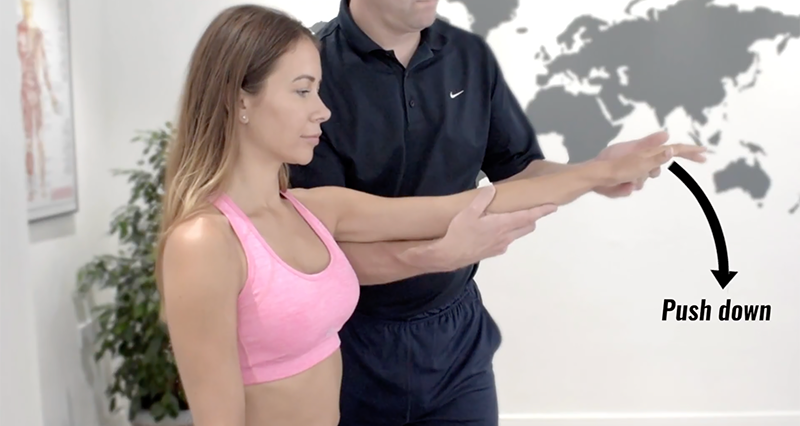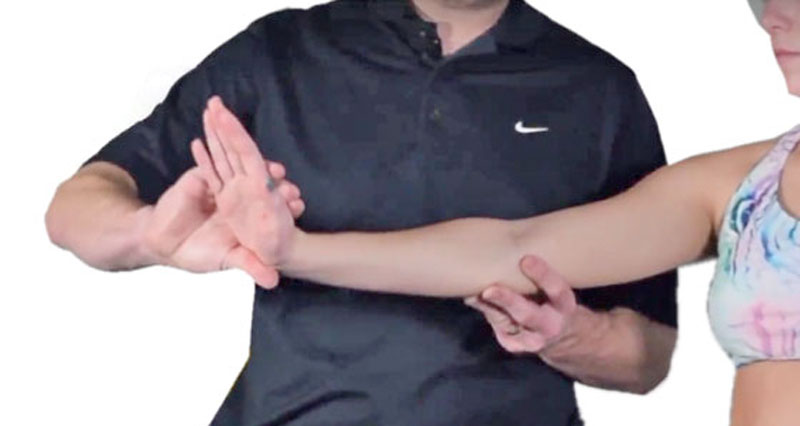Jobe’s test, also known as the valgus stress test, checks the medial collateral ligament (MCL) of the elbow. This key ligament stabilizes the inner elbow and helps prevent excessive outward stress on the joint.
What is a medial elbow ligament sprain?
A medial elbow ligament sprain is a tear or stretch of the ligaments on the inside of the elbow. The elbow joint consists of the humerus (upper arm bone), the Ulna, and Radius (forearm bones). These are connected by ligaments that join bone to bone and provide support and stability to the joint.
The ligaments on the inside of the elbow are known as the medial collateral ligaments (MCL) of the elbow and consist of the anterior MCL, the transverse MCL, and the posterior MCL. Muscles produce movement by attaching to the bones via tendons.

How to perform Jobe’s test:
Sit or lie the patient down comfortably. From behind, stabilize the patient’s upper arm and grasp the patient’s wrist. Bend the patient’s elbow slightly to about 20-30 degrees. Keep the patient’s forearm neutral.
Gently apply an outward force to the wrist while stabilizing the upper arm to test the MCL’s integrity. During the valgus stress, observe the patient for any pain, instability, or discomfort. Focus particularly on the inner aspect of the elbow joint.

What is a positive Jobe’s test?
A positive test result happens when the patient feels pain or instability on the inner elbow during the valgus stress manoeuvre. This indicates a possible MCL injury or looseness.
Considerations
Jobe’s test is valuable for assessing medial elbow instability, common in throwing athletes like baseball pitchers due to trauma, repetitive stress, or overuse. A positive result may lead to further evaluations like an MRI to confirm the diagnosis. Treatment plans could include rest, physical therapy, bracing, or sometimes surgery to repair or reconstruct the ligament.


